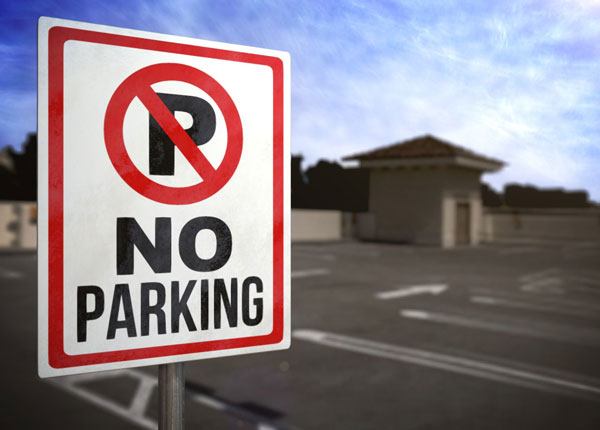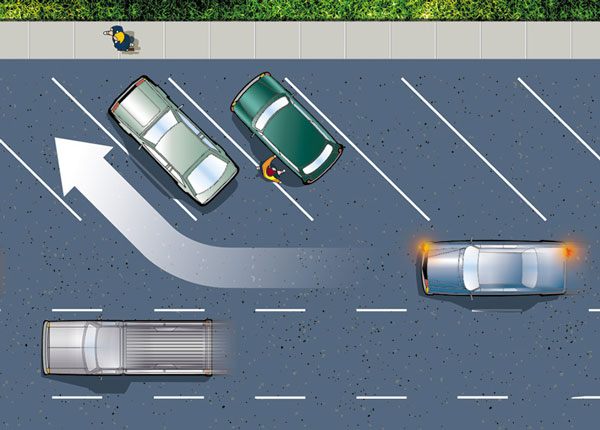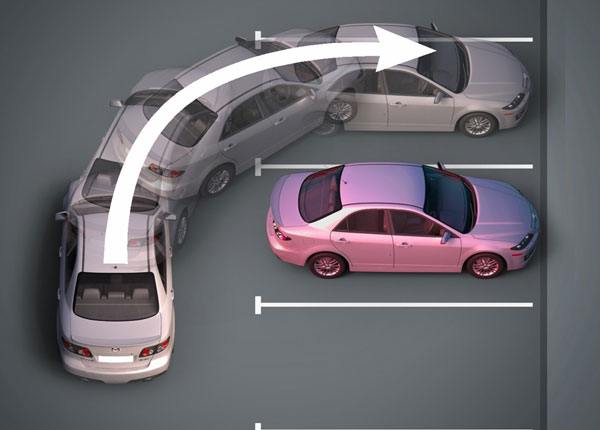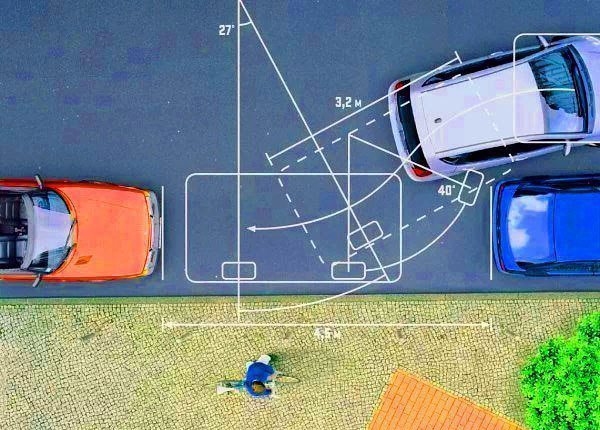
No Parking Zones: Rules, Regulations, Signs and Penalties
Updated Nov. 20, 2020Parking is illegal or restricted in many areas. Unfortunately, you cannot always rely on colored curb markings or a “NO PARKING” sign being present in places where parking is prohibited. As a driver, it is your responsibility to learn about parking rules, restrictions and prohibitions and abide by this information at all times.
Most parking rules apply across the country, while others are exclusively relevant to your state. Check your state’s driving manual for parking information, as you will be asked to recall it during the permit test.
Places where parking is illegal
These general parking rules apply consistently around the United States. Drivers may not park in the following areas:
- On a sidewalk or pedestrian crosswalk.
These areas are reserved for pedestrians, you must not park with any part of your vehicle encroaching on a sidewalk or crosswalk. - Within 20 feet of a pedestrian crosswalk.
Doing so may prevent other drivers from seeing pedestrians who are using the crossing. - On an intersection.
Parking on intersections is illegal and dangerous. You must never park within 20 feet of an unmarked intersection. - In a construction zone,
where your vehicle blocks traffic. - Within 30 feet of a “STOP” sign, “YIELD” sign or traffic signal light.
- Within 50 feet of train tracks or a railway crossing.
- Blocking or within 20 feet of a fire station driveway.
Some states also prohibit parking opposite fire station driveways, on the other side of the street. If a fire truck needs to attend an emergency call, it must be able to leave the station without obstructions. - Within 15 feet of a fire hydrant
, as fire crews may need to access the hydrant in an emergency. Some state handbooks set this distance at 10 feet, but it is best to keep 15 in mind, just to be sure. - Blocking a private road entrance, driveway or alley.
- On a bridge or an overpass.
- In a tunnel or underpass.
- Anywhere on a lane of opposing traffic.
- In a disabled parking space, unless authorized.
- On a street or highway right next to another parked vehicle.
This is called “double parking”.
Looking at this list, it might seem as if there is a lot of parking rules to remember. In fact, most of these restrictions are a matter of common sense. If parking your vehicle somewhere would pose a hazard to other road users or hold up traffic, you can safely assume it is prohibited.
Parking for people with disabilities
Any vehicle occupying a disabled parking space must have license plates or a permit registering the owner as having a disability, or as being the carer of another person with a disability.
Furthermore, the disabled person described in the registration MUST be using the vehicle while it is occupying a disabled space. Otherwise, parking in a reserved disabled space on a street, highway or shopping mall parking lot is illegal.

Drivers found to be using a disabled parking space illegally will be prosecuted and fined. The penalties for this kind of violation vary around the United States, so check your state’s own driving manual for further details. Identifying reserved disabled parking spaces is easy, as the pavement or curb are usually colored blue and marked with “DISABLED PERMIT ONLY” signs.

No parking signs – the meaning
As clear as the message may seem, many drivers interpret “NO PARKING” signs incorrectly. This is not necessarily the fault of the driver, as there is a distinct lack of in-depth explanation in many state driving handbooks. Not to mention, many different varieties of “NO PARKING” sign. Motorists often believe they are following a “NO PARKING” sign’s instructions, only to find themselves landed with a parking ticket anyway.
How far does the reach of a “NO PARKING” sign extend? What do the arrows and other road markings mean? We will answer these questions below. Here are some parking restriction signs you will likely encounter, complete with their meanings:
- 1

“NO PARKING” sign, without arrows.
This sign may be accompanied by a stretch of red or yellow painted curb. In this instance, the painted section marks the area where drivers may not park. Where no painted curb markings are present, it is safe to assume that the no parking zone stretches as far as the curb remains unbroken, in both directions. - 2

“NO PARKING” sign, arrow pointing left.
This indicates a no parking zone to the left of the sign. Drivers may park to the right of this sign providing no other restrictions apply. The sign usually reaches as far as the next intersection in the direction the arrow is pointing. - 3

“NO PARKING” sign, arrow pointing right.
This indicates a no parking zone to the right of the sign. Drivers may park prior to the sign on the left, providing no other restrictions apply. The sign usually reaches as far as the next intersection in the direction the arrow is pointing. - 4

“NO PARKING” sign, arrow pointing both directions.
Drivers may not park on either side of this sign. The sign usually reaches as far as the next intersection in either direction. - 5

“NO PARKING” sign with times and/or days of the week.
Parking is prohibited during the times and days listed on the “NO PARKING” sign.

Painted curbs
Painted curbs are often used to draw motorists’ attention to areas where parking is restricted. It is essential that you consult your state’s own driving manual for the meaning of different curb colors, as there is no country-wide standard. The following list can be used for guidance:
- Yellow curbs: Parking is prohibited, though you may be allowed to stop here for picking up and unloading passengers.
- Red curbs: Parking is totally prohibited.
- Blue curbs: Parking is reserved for disabled permit holders only.
In many cases, painted curbs will be clarified with “NO PARKING” signs to help drivers understand their meaning.




